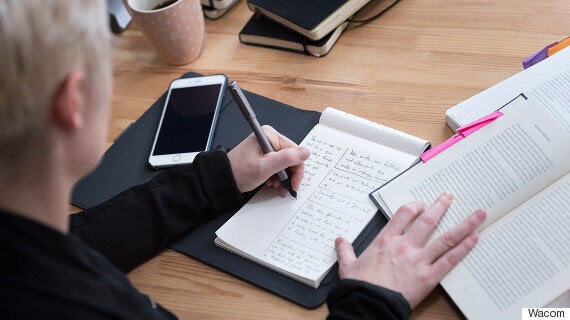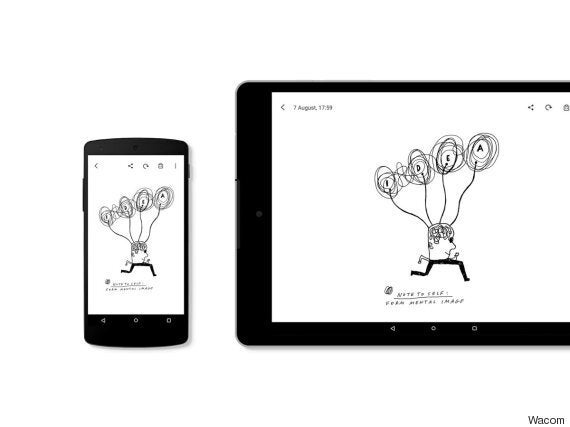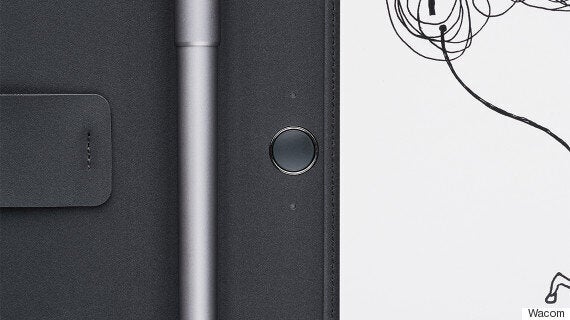Take a guess at how many note taking apps I currently use? I won't drag this out but the answer is four.
Evernote is, at present, my main app for trying to organise my life. I then use Google Keep for keeping all the little bits of code that I use everyday at Huff Post. Apple notes on my work laptop is used for interview questions and transcriptions and finally notes on my personal iCloud account is there for saving quotes I like, recipes I'll never actually try out and all those stupid measurements we insist on taking before we go to Ikea.
That is quite simply a ridiculous number of note taking apps, especially when we're all desperately searching for that productive nirvana where we can organise our lives both digitally and meaningfully in the way that only a good old fashioned ring binder can.
To try and put an end to all the meaningless nonsense I write down I decided that it was time to give the trust pen a second chance.
It is, after all the gadget that first gave me the ability to spell words (mostly correctly) and has ever since remained the tool of preference for wishing various friends a Happy Birthday and reminding siblings that they still owe me £50.
So how do I merge the physical with the digital? Evernote's Scannable app is one such method, an incredibly intuitive camera app which takes a physical sheet of copy or diagrams and then turns them into digital words and images.

Scannable is great for digitising business cards and organising those endless sheets of copy you'll inevitably stockpile as you plough through a year's worth of meetings.
What Scannable is not so great at is interpreting my awful handwriting.
I decided enough was enough and went on a full hunt for the note-taking solution that would finally get my life in order.
I settled on Bamboo's Spark.

It's a 'smart' folio that uses an electromagnetic resonance sensor combined with a provided pen to capture your scrawlings.
What sets the Spark apart from similar products is that while you need to use the provided pen, it'll work with any form of paper.
The Spark can then store up to 100 pages offline and then when you hit the sync button it'll send every written word, diagram or doodle over to your smartphone.

It's easy to setup, although you'll need to create another account, and once synced to the pad it quickly became second nature pressing the sync button after every meeting.
What I quickly found was that as I put pen to paper I was rambling far, far less. Notes formed more structure and my mind became more focused on the words and their meaning.
It sounds silly but actually the science is there, a study at Princeton University discovered that students who were taking notes on their laptops were less capable of answering conceptual questions.

Then of course there's the undeniable finality of placing ink on paper. Ink isn't something you can just rub out, or delete or copy or paste. It's a permanent etching that will remain on that paper.
That finality alone makes you think twice before just scribbling any old nonsense and it's this combined with the fact that I can then take these and upload them to my phone that makes this analogue-to-digital relationship so strong.
The Spark is certainly helped by the fact that Wacom's software for turning handwriting into editable text is extremely powerful. While it wasn't perfect it was still hugely impressive at turning badly written notes into legible prose. You can then upload those notes to....you guessed it, Evernote.

If I had one complaint it's that the Spark isn't actually that satisfying to write on, and that's partly the pen's fault. It's not that it's bad, it's just that biro has never been a great way of writing so it's a shame that you're limited in what you can use.
What's hard to deny however is that after a week's worth of using it, the proof was clear. If, like me you struggle to take meaningful notes then resorting back to the good old pen and paper doesn't mean you have to abandon the digital world entirely.
The pen doesn't have to be the enemy of progress, it can be an ally instead.
